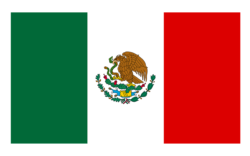What Does The Eagle And Snake Mean On The Mexican Flag?
Have you ever wondered what the eagle and snake on the Mexican flag symbolize? The Mexican flag is a vibrant display of national pride, with its iconic eagle perched atop a cactus, clutching a serpent in its talons. But what is the deeper meaning behind this striking imagery? In this article, we will explore the fascinating history and cultural significance of the eagle and snake on the Mexican flag, shedding light on the powerful symbolism that represents the nation’s heritage and identity.

History of the Mexican Flag
Origins of the Mexican Flag
The history of the Mexican flag dates back to the early 19th century, during the Mexican War of Independence against Spain. It was on September 16, 1810, that Miguel Hidalgo, a prominent figure in the fight for independence, first waved a banner with the image of the Virgen de Guadalupe, a revered symbol in Mexican culture, as a symbol of unity and resistance. This banner is considered to be the precursor to the Mexican flag we know today.
Design and Meaning of the Mexican Flag
The modern Mexican flag features three vertical stripes of green, white, and red, with the national emblem of an eagle and a snake in the center. The green stripe represents hope and fertility, the white represents purity and unity, and the red represents the blood of the national heroes who fought for independence.
Symbolism of the Eagle and Snake
The Legend of the Eagle and Snake
The eagle and snake depicted on the Mexican flag have a rich historical and cultural significance. Legend has it that the Aztecs, one of the indigenous civilizations in Mexico, were guided by a prophecy to settle in a place where they would find an eagle perched on a cactus, devouring a serpent. This prophecy came true when they arrived at the site where present-day Mexico City stands.
Religious and Cultural Significance
In Aztec mythology, the eagle was associated with the sun god Huitzilopochtli, while the snake represented the earth goddess Coatlicue. The depiction of the eagle and snake on the flag symbolizes the union of heaven and earth, and the continuity between the ancient indigenous cultures and the modern nation of Mexico. It reflects the deep-rooted religious and cultural beliefs of the Mexican people.
The Eagle and Snake Depiction
Description of the Eagle and Snake
The eagle depicted on the Mexican flag is a golden eagle, which is a species native to Mexico. It is shown with its wings spread wide, grasping a snake with its talons. The snake is green and writhing, representing the continuous struggle between good and evil.
Color and Symbolism of the Eagle and Snake
The colors of the eagle and snake on the flag have their own symbolism. The golden eagle represents power, bravery, and strength. Its predatory nature symbolizes the courage of the Mexican people in the face of adversity. The green snake represents life, wisdom, and renewal. Together, they embody the resilience and vitality of the Mexican nation.
The Eagle – National Symbol of Mexico
The Resplendent Quetzal
The eagle has long been celebrated as a national symbol in Mexico even before the adoption of the flag. In pre-Hispanic cultures, the resplendent quetzal, a magnificent bird with vibrant green and red feathers, was considered sacred and associated with divinity. The image of the eagle on the flag is reminiscent of this revered bird.
Eagles in Pre-Hispanic Cultures
Eagles held great prominence in the civilizations that thrived in Mesoamerica, such as the Aztecs and the Mayans. They were associated with deities and were believed to have mystical powers. Eagles were often depicted in art, architecture, and ceremonial rituals, reflecting their significance in these ancient cultures.
Adoption of the Eagle as a National Symbol
When the Mexican flag was officially adopted in 1968, the eagle became the national emblem, representing the strength, sovereignty, and independence of Mexico. It serves as a reminder of the heroic struggles of the past and the unity of the Mexican people.

The Snake – A Historical Symbol
The Serpent in Pre-Hispanic Cultures
The snake, or serpent, also plays a prominent role in the mythology and symbolism of ancient Mexican cultures. It was regarded as a symbol of wisdom, fertility, and transformation. In Aztec and Mayan civilizations, the snake was often associated with gods and goddesses, including Quetzalcoatl and Kukulkan.
The Symbolic Meaning of the Snake
The snake on the Mexican flag represents the cyclical nature of life and the eternal struggle between opposing forces. It embodies the concept of duality and the constant battle between light and darkness, good and evil. The snake’s inclusion on the flag reinforces the idea that Mexico’s history and identity are shaped by this everlasting struggle.
Influences from Aztec and Mayan Culture
The depiction of the eagle and snake on the Mexican flag draws inspiration from the art and symbolism of the Aztec and Mayan civilizations. These ancient cultures greatly influenced Mexican identity and continue to be celebrated and honored today. The flag serves as a connection to the country’s rich historical heritage, promoting a sense of pride and cultural identity.
The Symbolic Union of Eagle and Snake
The Connection Between Eagle and Snake
The intertwined depiction of the eagle and snake on the Mexican flag represents the harmonious balance between opposing forces. The eagle, with its majestic flight, and the snake, with its grounded slithering, symbolize the union of the celestial and earthly realms. This union signifies the unity of the Mexican people and their ability to overcome challenges by embracing both their spirituality and practicality.
Representations of Balance and Duality
The combination of the eagle and snake on the flag represents the concept of balance and the fundamental duality of existence. It embodies the idea that opposites are interconnected and essential for the overall harmony and functioning of the universe. This symbolism is deeply ingrained in Mexican culture and reflects its philosophical and spiritual foundations.

The Mexican Flag – A National Identity
The Usage and Importance of the Flag
The Mexican flag is revered as a powerful national symbol that carries significant cultural and historical meaning. It is proudly displayed in schools, government buildings, and during national holidays and events. The flag serves as a rallying point for the Mexican people, fostering a sense of national identity and unity.
Pride and Unity in Mexican Culture
The Mexican flag is an emblem of pride for people of Mexican heritage worldwide. It symbolizes the rich cultural heritage, vibrant traditions, and resilient spirit of the Mexican people. The flag serves as a unifying force, bringing together individuals from diverse backgrounds and instilling a sense of belonging to a shared identity.
Controversies and Misinterpretations
Misconceptions and Misperceptions
Throughout history, there have been misinterpretations and misconceptions regarding the symbolism of the eagle and snake on the Mexican flag. Some have erroneously associated the snake with evil or negativity, failing to understand its deeper meaning of duality and balance. It is important to approach the flag’s symbolism with an open mind and a willingness to learn and appreciate its cultural context.
Political Interpretations and Controversies
As with any national symbol, the Mexican flag has also been subject to political interpretations and controversies. Certain political groups or ideologies may attempt to claim or distort the flag’s meaning for their own agendas. It is crucial to separate the flag as a unifying symbol of Mexican identity from any partisan or divisive interpretations.
The Mexican Flag in Modern Times
Celebrations and Display of the Flag
The Mexican flag continues to be prominently displayed during various national celebrations and events. On September 16th, Mexico’s Independence Day, the flag is raised in every town and city across the country. It is also commonly seen during sporting events, holidays, and cultural festivals, evoking a sense of national pride and solidarity.
Evolution and Changes over Time
While the flag’s design and symbolism have remained relatively consistent since its adoption, there have been some minor modifications over time. The shade of green used in the flag has evolved, and the depiction of the eagle and snake has been refined. These changes reflect a desire to preserve the flag’s historical roots while adapting to the evolving cultural and artistic sensibilities.
Conclusion
The Mexican flag is a testament to the rich history, cultural diversity, and indomitable spirit of the Mexican people. The depiction of the eagle and snake represents the deep-rooted religious beliefs, ancient traditions, and historical heritage of the country. It serves as a unifying symbol that transcends political boundaries and fosters a sense of pride, unity, and resilience among the Mexican people. The flag’s meaning and significance continue to evolve, reflecting the ever-changing dynamics of Mexican society while honoring its enduring identity.









